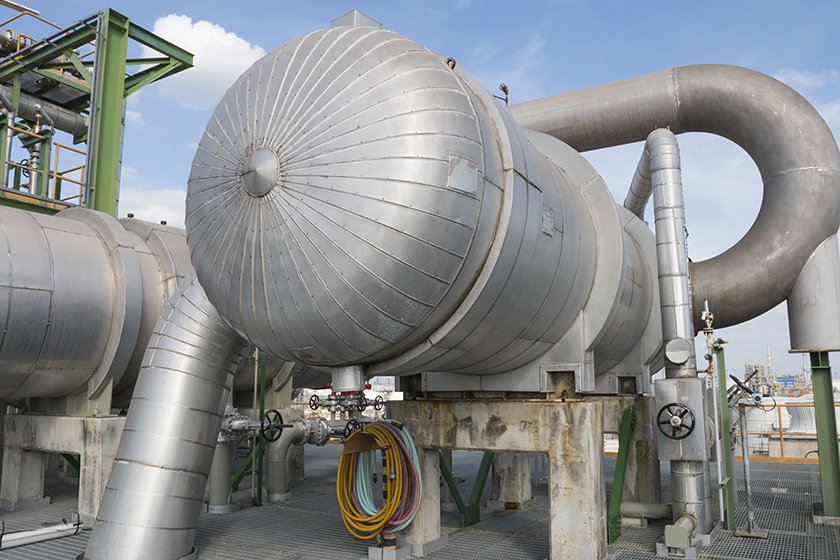Drift loss—defined as the unintended entrainment of liquid-phase water droplets into the exhaust air stream of evaporative cooling systems—constitutes a significant operational inefficiency and environmental liability in industrial cooling tower applications. In the absence of an effective cooling tower drift eliminator, these droplets, which frequently contain high concentrations of treatment chemicals, are discharged into the atmosphere, leading to loss of process water, excessive chemical consumption, material degradation, and regulatory noncompliance.
Drift droplets originate primarily from the interaction of turbulent airflows with the heat exchange media and water distribution infrastructure. This phenomenon becomes particularly pronounced at elevated air velocities and in systems exhibiting suboptimal internal flow dynamics. The integration of a correctly specified and well-engineered cooling tower mist eliminator is therefore essential to limit drift loss and preserve the functional efficiency of the evaporative heat rejection process.
Operational and Environmental Implications of Drift Loss
- Excessive Chemical Consumption and Cycle Instability
When chemically conditioned water is lost via drift, both the water volume and its additive constituents—such as biocides, scale inhibitors, and corrosion inhibitors—must be replenished. This leads to increased operational expenditures and necessitates frequent recalibration of the system’s cycles of concentration. Persistent drift loss undermines chemical control programs and introduces variability in water quality management.
- Material Degradation and Surface Corrosion
Drift droplets, especially those carrying high total dissolved solids (TDS) and corrosive ions, deposit on adjacent structural components, instrumentation, and process equipment. Over time, this leads to localized corrosion, fouling, and loss of mechanical integrity. The absence of an effective high-efficiency drift eliminator exacerbates surface degradation in metallic and composite materials commonly used in industrial facilities.
- Public Health and Regulatory Risk
In environments conducive to microbial proliferation—particularly warm, moist conditions—uncontrolled drift can contribute to the dissemination of Legionella pneumophila and other pathogenic organisms. Regulatory agencies in many jurisdictions impose stringent drift emission limits (commonly <0.005% of circulating flow), and failure to comply may result in penalties, shutdowns, or reputational damage. High-performance cooling tower drift eliminator systems are indispensable for mitigating aerosol dispersion and ensuring compliance with health and safety standards.
- Thermal Performance Degradation
Drift loss alters the hydraulic balance of the cooling tower basin, reducing the availability of recirculating water. This impairs the heat rejection capacity of the system and introduces temperature variability in downstream processes. A poorly functioning cooling tower mist eliminator compromises droplet separation, thus destabilizing the evaporative cooling process and necessitating compensatory energy input from auxiliary equipment.
Also Read :
Tips for Reducing Water Consumption in Cooling Towers
Why Your Cooling Tower Should Have Drift Eliminator?
How Drift Eliminators Improve Cooling Tower Efficiency
- Increased Energy Demand
To offset the water volume and thermal inefficiencies introduced by drift loss, system components such as pumps and fans are required to operate at elevated duty cycles. This not only increases electricity consumption but also imposes additional mechanical stress on rotating equipment. Properly designed high-efficiency drift eliminators minimize entrainment while preserving optimal airflow characteristics, thereby reducing parasitic energy loads.
Engineering Approaches for Drift Mitigation
Mitigation of drift loss is a multidisciplinary engineering problem, requiring a coordinated approach to airflow management, droplet dynamics, and materials selection. Modern cooling tower drift eliminator technologies incorporate advanced blade geometries and multi-stage collection pathways to enhance droplet capture efficiency without imposing excessive pressure drop.
Recommended Design Features Include:
- Multi-pass drift modules that maximize droplet residence time and impingement likelihood
- Aerodynamically contoured blades engineered to redirect saturated air while facilitating liquid phase separation
- Non-corrosive, UV-resistant polymeric materials to ensure long-term mechanical stability under aggressive operating conditions
- Modular assemblies that facilitate both initial installation and retrofitting in existing tower structures
- Application-specific blade spacing designed to accommodate variable air velocity profiles and tower geometries
State-of-the-art high-efficiency drift eliminators achieve drift loss rates as low as 0.0005% of the total circulating water volume, thereby meeting the most rigorous environmental and operational standards.
Design Considerations and Specification Requirements
The specification of a cooling tower mist eliminator must be based on empirical data, including droplet size distribution, airflow velocity profiles, and operational load variability. Undersized or improperly designed eliminators may lead to excessive static pressure losses, impairing fan performance and destabilizing the vapor-liquid equilibrium critical to evaporative cooling.
Kimre's engineering methodology ensures that each cooling tower drift eliminator is tailored to the thermal and fluid dynamic requirements of the specific application. This results in:
- Stable thermal performance across variable operating loads
- Reduced chemical and water consumption
- Prolonged equipment lifespan due to reduced fouling and corrosion
- Enhanced system efficiency through optimized airflow management
Partner with Kimre for Advanced Drift Control Solutions
Effective drift management is essential for preserving water resources, minimizing environmental impact, and sustaining the performance of industrial cooling operations. Kimre's proprietary high-efficiency drift eliminator technologies are engineered to provide superior droplet removal efficiency under dynamic and demanding conditions.
For facilities operating in power generation, petrochemical, pharmaceutical, and process industries, Kimre offers a complete portfolio of precision-engineered mist elimination solutions. Each system is designed to integrate seamlessly with existing cooling infrastructure, ensuring compliance with environmental regulations and delivering measurable improvements in operational reliability.
To specify a customized drift elimination solution engineered for your application, consult with Kimre’s technical team today.


